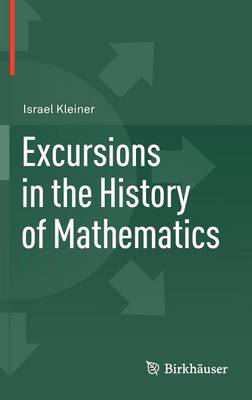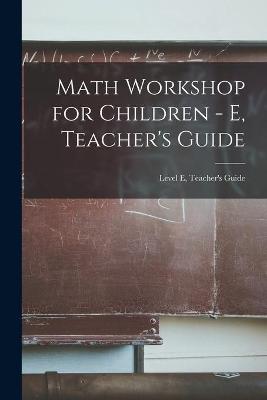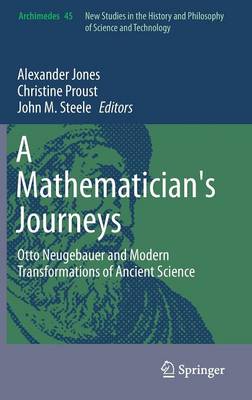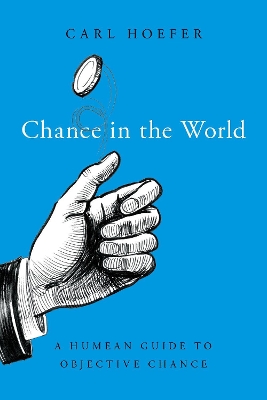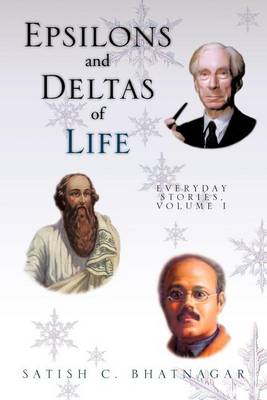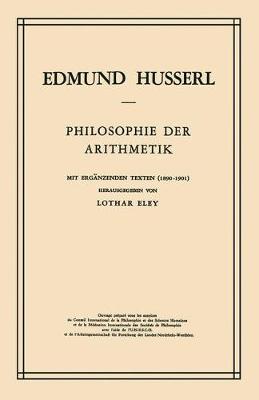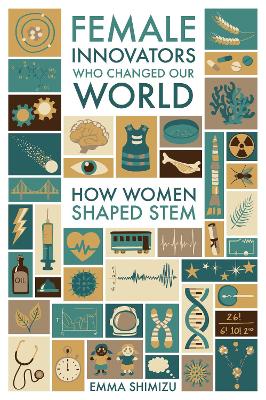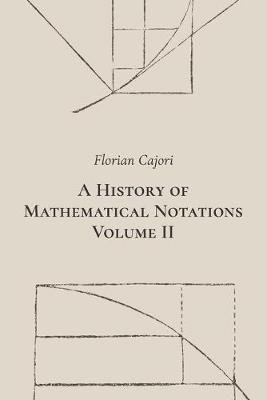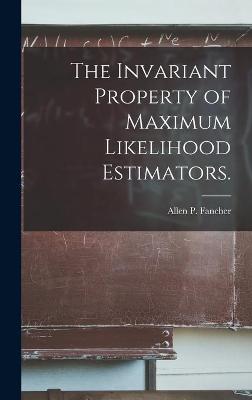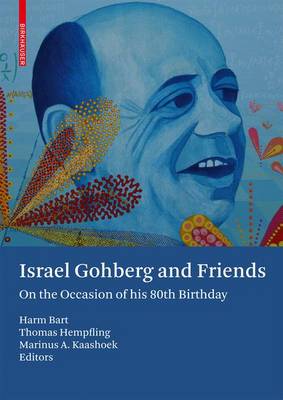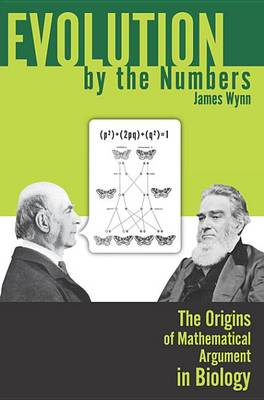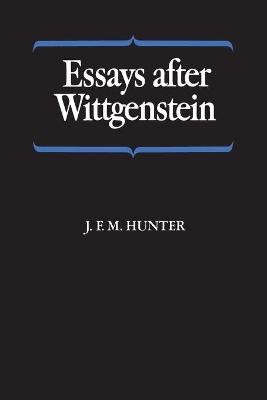Cultures of Mathematics and Logic (Trends in the History of Science)
This book gathers the proceedings of the conference "Cultures of Mathematics and Logic," held in Guangzhou, China. The event was the third in a series of interdisciplinary, international conferences emphasizing the cultural components of philosophy of mathematics and logic. It brought together researchers from many disciplines whose work sheds new light on the diversity of mathematical and logical cultures and practices. In this context, the cultural diversity can be diachronical (different cult...
This book comprises five parts. The first three contain ten historical essays on important topics: number theory, calculus/analysis, and proof, respectively. Part four deals with several historically oriented courses, and Part five provides biographies of five mathematicians who played major roles in the historical events described in the first four parts of the work. Excursions in the History of Mathematics was written with several goals in mind: to arouse mathematics teachers' interest in th...
Collected Papers (Springer Collected Works in Mathematics)
by Jack C. Kiefer, Lawrence D. Brown, Ingram Olkin, Jerome Sacks, and Henry P. Wynn
The commentaries in this volume provide reviews of selected papers from the three-volume Collected Papers of Jack Carl Kiefer. From the Preface of Volume III: "The theory of optimal design of experiments as we know it today is built on a solid foundation developed by Jack Kiefer, who formulated and resolved some of the major problems of data collection via experimentation. A principal ingredient in his formulation was statistical efficiency of a design. Kiefer's theoretical contributions to opti...
Behind every great man, there's a great woman; no other adage more aptly describes the relationship between Charles Babbage, the man credited with thinking up the concept of the programmable computer, and mathematician Ada Lovelace, whose contributions, according to Essinger, proved indispensable to Babbage's invention. The Analytical Engine was a series of cogwheels, gear-shafts, camshafts, and power transmission rods controlled by a punch-card system based on the Jacquard loom. Lovelace, the o...
Math Workshop for Children - E, Teacher's Guide; Level E, Teacher's Guide
by Anonymous
A Mathematician's Journeys (Archimedes, #45)
This book explores facets of Otto Neugebauer's career, his impact on the history and practice of mathematics, and the ways in which his legacy has been preserved or transformed in recent decades, looking ahead to the directions in which the study of the history of science will head in the twenty-first century. Neugebauer, more than any other scholar of recent times, shaped the way we perceive premodern science. Through his scholarship and influence on students and collaborators, he inculcated bo...
Chance in the World (Oxford Studies in Philosophy of Science)
by Carl Hoefer
Probability has fascinated philosophers, scientists, and mathematicians for hundreds of years. Although the mathematics of probability is, for most applications, clear and uncontroversial, the interpretation of probability statements continues to be fraught with controversy and confusion. What does it mean to say that the probability of some event X occurring is 31%? In the 20th century a consensus emerged that there are at least two legitimate kinds of probability, and correspondingly at le...
Application of the Toops-Adkins Formula in the Construction and Validation of a Test in Mathematics
by Aubrey Thornton Edwards
Philosophie Der Arithmetik (Husserliana: Edmund Husserl - Gesammelte Werke, #12)
by Edmund Husserl and L. Eley
Der Begriff der Zahl ist ein vielfacher. Darauf weist uns schon die Mehrheit verschiedener Zahlworter hin, die in der Sprache des gewohnlichen Lebens auftreten und von den Grammatikern unter 5 folgenden Titeln aufgefiihrt zu werden pflegen: die Anzahlen oder Grundzahlen (numeralia cardinalia), die Ordnungszahlen (n. ordinalia), die Gattungszahlen (n. specialia), die Wiederho- lungszahlen (n. iterativa), die Vervielfaltigungszahlen (n. multi- plicativa) und die Bruchzahlen (n. partitiva). DaB die...
Augustin-Louis, Baron Cauchy (1789-1857) was the pre-eminent French mathematician of the nineteenth century. He began his career as a military engineer during the Napoleonic Wars, but even then was publishing significant mathematical papers, and was persuaded by Lagrange and Laplace to devote himself entirely to mathematics. His greatest contributions are considered to be the Cours d'analyse de l'Ecole Royale Polytechnique (1821), Resume des lecons sur le calcul infinitesimal (1823) and Lecons s...
Female Innovators Who Changed Our World (Trailblazing Women)
by Green, Emma
We are not all born with equal opportunities. Yet there have been countless women who have overcome a range of barriers such as prejudice, illness, and personal tragedy to advance our understanding of science, technology, engineering, and mathematics (STEM). They used their knowledge to change the world, and their stories are fascinating. This book offers a concise introduction to the lives of 45 women, taking you into the cultural and social context of the world they lived in. Through their int...
A History of Mathematical Notations. Volume II (A History of Mathematical Notations, #2)
by Cajori
The Invariant Property of Maximum Likelihood Estimators.
by Allen P Fancher
Mathematicians do not work in isolation. They stand in a long and time honored tradition. They write papers and (sometimes) books, they read the publications of fellow workers in the ?eld, and they meet other mathematicians at conferences all over the world. In this way, in contact with colleagues far away and nearby, from the past (via their writings) and from the present, scienti?c results are obtained whicharerecognizedasvalid.Andthat-remarkablyenough-regardlessofethnic background, political...
Mathematical Modelling (Course MST204: Mathematics/Science/Technology)
by M. Crampin
Evolution by the Numbers (Rhetoric of Science and Technology)
by James Wynn
This book includes: Introduction; The mathematical community in the early nineteenth century; Number theory; Journals and publishing in the early nineteenth century; Galois and Galois theory; and, The international community of mathematicians.
Charles Hermite (1822-1901) was a French mathematician who made significant contributions to pure mathematics, and especially to number theory and algebra. In 1858 he solved the equation of the fifth degree by elliptic functions, and in 1873 he proved that e (the base of natural logarithms) is transcendental. The legacy of his work can be shown in the large number of mathematical terms which bear the adjective 'Hermitian'. As a teacher at the Ecole Polytechnique, the Faculte des Sciences de Pari...

